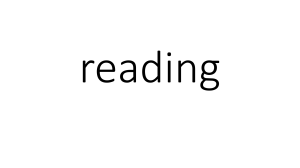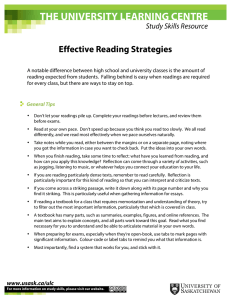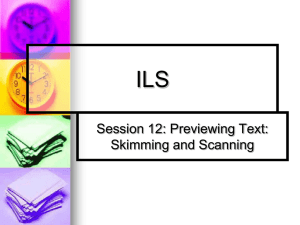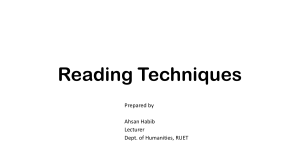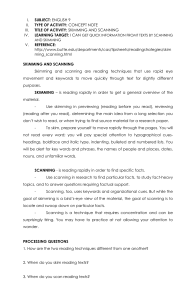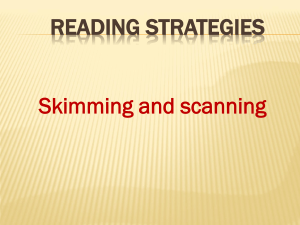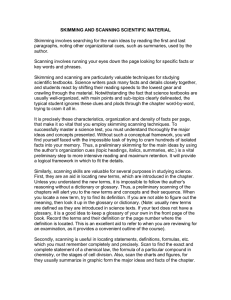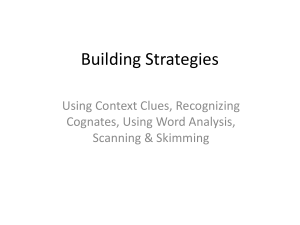Reading Strategies: Scanning, Skimming, Detailed Reading
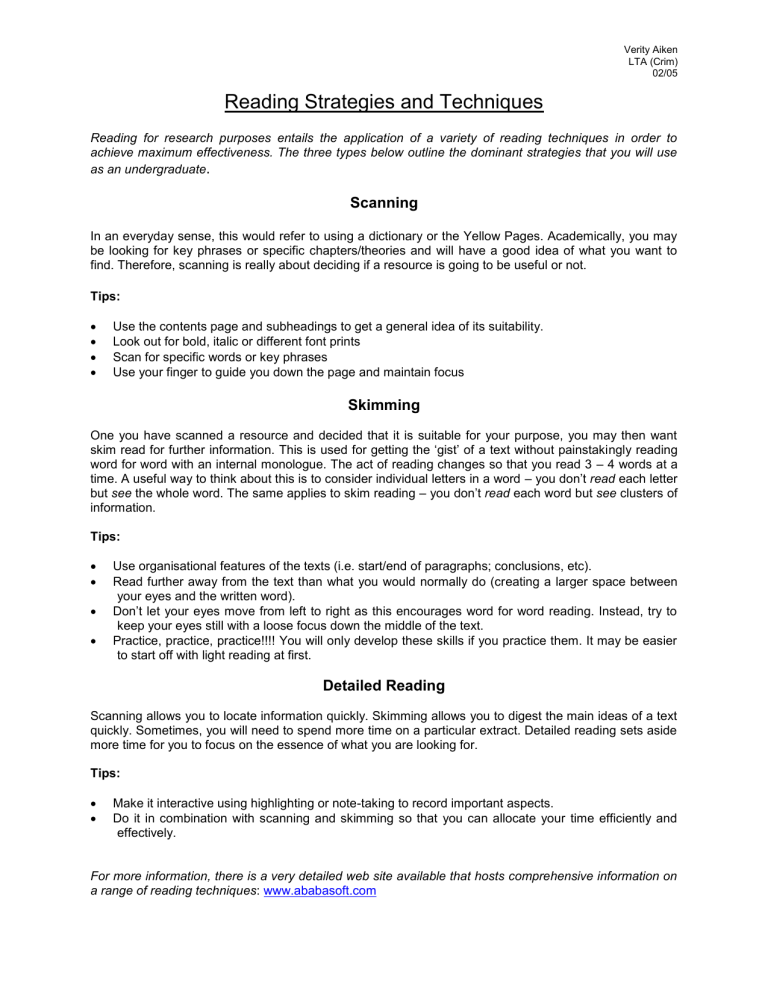
Verity Aiken
LTA (Crim)
02/05
Reading Strategies and Techniques
Reading for research purposes entails the application of a variety of reading techniques in order to achieve maximum effectiveness. The three types below outline the dominant strategies that you will use as an undergraduate .
Scanning
In an everyday sense, this would refer to using a dictionary or the Yellow Pages. Academically, you may be looking for key phrases or specific chapters/theories and will have a good idea of what you want to find. Therefore, scanning is really about deciding if a resource is going to be useful or not.
Tips:
Use the contents page and subheadings to get a general idea of its suitability.
Look out for bold, italic or different font prints
Scan for specific words or key phrases
Use your finger to guide you down the page and maintain focus
Skimming
One you have scanned a resource and decided that it is suitable for your purpose, you may then want skim read for further information. This is used for getting the ‘gist’ of a text without painstakingly reading word for word with an internal monologue. The act of reading changes so that you read 3 – 4 words at a time. A useful way to think about this is to consider individual letters in a word – you don’t read each letter but see the whole word. The same applies to skim reading – you don’t read each word but see clusters of information.
Tips:
Use organisational features of the texts (i.e. start/end of paragraphs; conclusions, etc).
Read further away from the text than what you would normally do (creating a larger space between your eyes and the written word).
Don’t let your eyes move from left to right as this encourages word for word reading. Instead, try to keep your eyes still with a loose focus down the middle of the text.
Practice, practice, practice!!!! You will only develop these skills if you practice them. It may be easier to start off with light reading at first.
Detailed Reading
Scanning allows you to locate information quickly. Skimming allows you to digest the main ideas of a text quickly. Sometimes, you will need to spend more time on a particular extract. Detailed reading sets aside more time for you to focus on the essence of what you are looking for.
Tips:
Make it interactive using highlighting or note-taking to record important aspects.
Do it in combination with scanning and skimming so that you can allocate your time efficiently and effectively.
For more information, there is a very detailed web site available that hosts comprehensive information on a range of reading techniques : www.ababasoft.com
